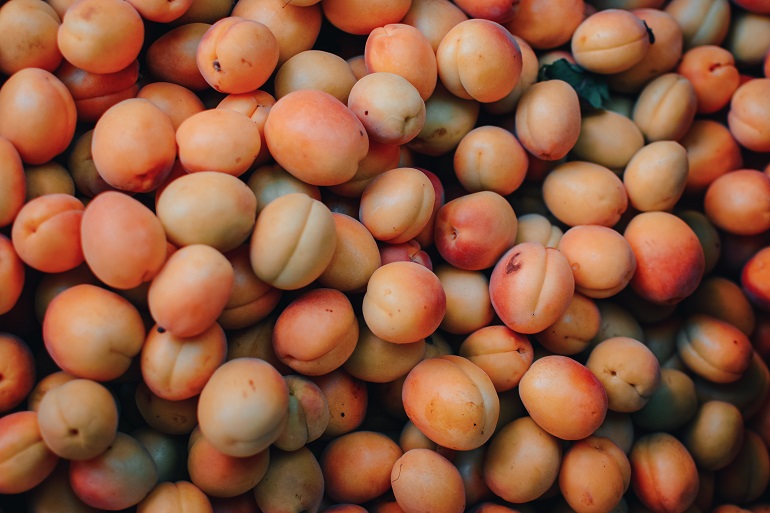How to store apricots

This post is also available in:
This post is also available in:
![]() Ελληνικά (Greek)
Ελληνικά (Greek)
How to preserve apricots – Ideal storing conditions for Apricots
The average total yield of an apricot orchard can reach 13 to up to 25 tons of fruits per hectare (11598 to 22304 pounds per acre). The countries with the highest production worldwide, in order, are: Turkey, Iran, Iran, Uzbekistan, Italy, Algeria, Pakistan, France, Morocco etc.
Some popular apricot varieties are the following: Royal, Blenheim, Tilton, Aurora, Bebeco, Amabile Vecchioni, Asgarabad, French, and Bergeron. These spherical, fleshy fruits are rich in vitamin A and potassium. But they also contain vitamins C, B1, B2, fibre, and natural sugars. They can be eaten fresh or dried. Apricots can be eaten fresh or used for making jams, compotes, juices, and confectionery.
How storing temperature affects the ‘ageing’ of the apricots
After harvesting, apricots are still ‘alive’ and breathing. The higher the ambient temperature, the more intense their respiration. This increases the rate of ripening and ultimately leads to faster ageing and death of the fruit. If we want to preserve it for longer periods, we need to limit the fruit’s respiration.
This can be achieved by immediate cooling after harvesting. This takes place in special rooms (pre-coolers).
Conclusion: The postharvest life of apricots increases as their respiration rate decreases.
What are the right conditions for preserving apricots?
Immediate pre-chilling at 2 °C is the best way of dealing with problems in the postharvest period. To achieve uniformity of temperature throughout the volume of the preserved product and to avoid freezing temperatures (that will damage the fruits), you are advised to leave gaps of 5 – 10 centimetres (2-4 inches) between storage pallets. These gaps among the pallets should be parallel to the cold air flow inside the storage area.

This arrangement is important to be formed from the beginning to remove the minimum amount of ethylene produced, which is thus much more easily carried away from the pallets before it affects the rest of the apricots.
Additionally, it would be best to store the apricots so as to leave a suitable space underneath them. This creates uniformity in the concentration of carbon dioxide (CO2), which is heavier than the other gases and occupies the lower parts of the cold chamber. (Palletization, shelves, pallets, etc.) To successfully store apricots, determine the appropriate harvesting time by observing the maturity indicators.
Effects of various gases in apricots stored in cold rooms
Ethylene
Increases respiration and accelerates ripening of the harvested products. We recommend the use of an ethylene burner or an ethylene-absorbing device.
Ventilation: The special design and installation of a suitable ventilation system to remove the products of apricot respiration (digitally controlled) are usually needed.
Carbon dioxide
Carbon dioxide concentrations of 2 to 3 % protect the quality of the fruits and maintain the stability of the flesh and colour of the apricots. Concentrations above 5 % create odours, loss of aromas and deterioration in taste.
Ozone
It breaks down ethylene and destroys fungal spores.
It is recommended to install a device to provide the necessary amount of ozone to combat the microbial load. In addition to reducing ethylene, the use of an ozone device neutralizes airborne pathogens and bacteria, which are detrimental to the life of the products.
Oxygen
Oxygen concentrations of 2% – 3% maintain flesh and colour stability.
Note:
Disinfect refrigerated chambers before using them.
References
Isofruit.gr









































































